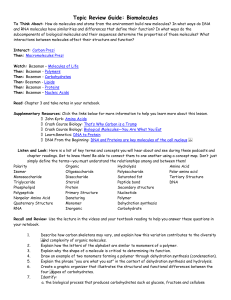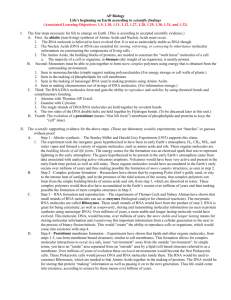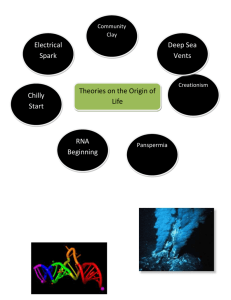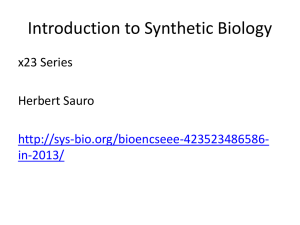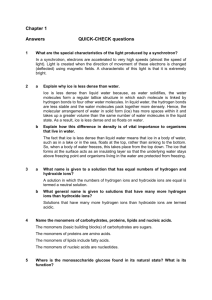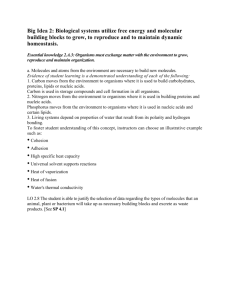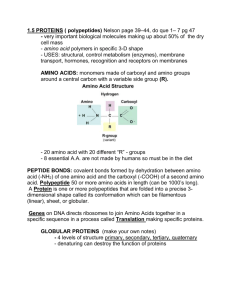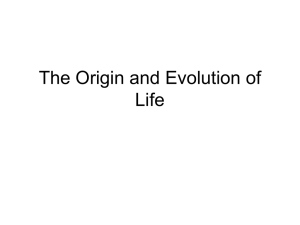2 Topic Review Guide
advertisement
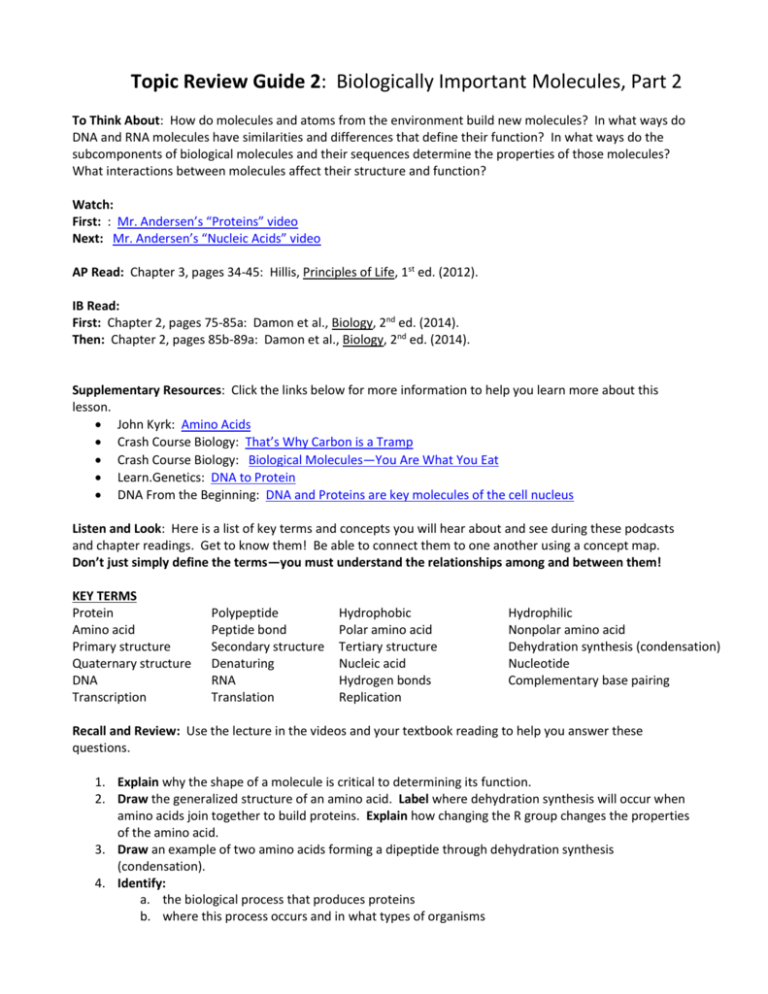
Topic Review Guide 2: Biologically Important Molecules, Part 2 To Think About: How do molecules and atoms from the environment build new molecules? In what ways do DNA and RNA molecules have similarities and differences that define their function? In what ways do the subcomponents of biological molecules and their sequences determine the properties of those molecules? What interactions between molecules affect their structure and function? Watch: First: : Mr. Andersen’s “Proteins” video Next: Mr. Andersen’s “Nucleic Acids” video AP Read: Chapter 3, pages 34-45: Hillis, Principles of Life, 1st ed. (2012). IB Read: First: Chapter 2, pages 75-85a: Damon et al., Biology, 2nd ed. (2014). Then: Chapter 2, pages 85b-89a: Damon et al., Biology, 2nd ed. (2014). Supplementary Resources: Click the links below for more information to help you learn more about this lesson. John Kyrk: Amino Acids Crash Course Biology: That’s Why Carbon is a Tramp Crash Course Biology: Biological Molecules—You Are What You Eat Learn.Genetics: DNA to Protein DNA From the Beginning: DNA and Proteins are key molecules of the cell nucleus Listen and Look: Here is a list of key terms and concepts you will hear about and see during these podcasts and chapter readings. Get to know them! Be able to connect them to one another using a concept map. Don’t just simply define the terms—you must understand the relationships among and between them! KEY TERMS Protein Amino acid Primary structure Quaternary structure DNA Transcription Polypeptide Peptide bond Secondary structure Denaturing RNA Translation Hydrophobic Polar amino acid Tertiary structure Nucleic acid Hydrogen bonds Replication Hydrophilic Nonpolar amino acid Dehydration synthesis (condensation) Nucleotide Complementary base pairing Recall and Review: Use the lecture in the videos and your textbook reading to help you answer these questions. 1. Explain why the shape of a molecule is critical to determining its function. 2. Draw the generalized structure of an amino acid. Label where dehydration synthesis will occur when amino acids join together to build proteins. Explain how changing the R group changes the properties of the amino acid. 3. Draw an example of two amino acids forming a dipeptide through dehydration synthesis (condensation). 4. Identify: a. the biological process that produces proteins b. where this process occurs and in what types of organisms 5. Create a 4-panel cartoon that illustrates the differences between the four levels of protein structure. 6. Explain how the environment surrounding a protein influence its shape and structure. 7. Explain the importance of hydrogen bonding in maintaining the structure of the nucleic acids DNA and RNA. 8. Explain the roles of DNA and RNA in making proteins. 9. Describe the similarities between ATP and nucleotides in DNA/RNA. 10. Explain how scientists think that DNA evolved from RNA and describe the bonds that hold the DNA molecule together. 11. Explain how DNA molecules can be so diverse even though they are structurally similar. Learn More: For more examples of biologically important molecules, use the links below: Foldit: play a game to practice folding proteins Eterna: play a game to design RNA molecules NobelPrize.org Chirality Game: learn about “handedness” of molecules
